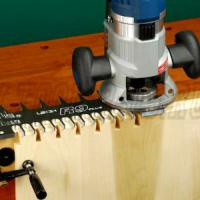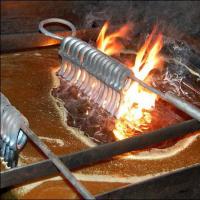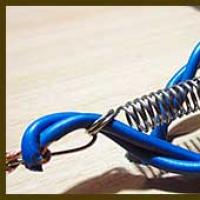DIY growing table. How to make a children's table a school desk. Models with smooth adjustment mechanisms are more convenient to use. With their help, you can organize a workplace in any corner of the apartment. The storage table has an original design.
As a desk, which is the main part of the interior of any educational institution. Also, the desk can be usefully implemented at home, which is why it was decided to make a desk with your own hands for children. In this article I will tell you how the author made an age-appropriate small desk with his own hands and a comfortable chair, which will allow you to conveniently leaf through picture books, draw, play with plasticine or lay out toys. Before manufacturing, we need to decide on the materials needed for this.
In order to assemble this homemade product, we need:
* Piano hinges 50 cm long.
* Con firms.
* Self-tapping screws.
*Sandpaper.
* Metal corners.
* Sawing of a pine furniture board, for a desk according to scheme 1, and for a chair according to scheme number 2.
All the materials are ready.
You will also need tools:
* Jigsaw.
* Screwdriver.
* Grinder to facilitate sanding work.
And this is how the drawing of our future desk looks like, since making details with dimensions taken from the head will not only be wrong, but also not accurate.
Step one.
First of all, you need to assemble the desk, and only then the chair, so gradually we begin the fun assembly process. As usual, all wooden parts should have the smallest roughness, which in other words, just be encrypted. It is best to grind on a grinding machine or with a grinder, but if it is not there, then you can use ordinary sandpaper. It should be processed with sandpaper with a grit size of first coarse P40, then medium P120 and smaller P220. We correct sharp corners with a jigsaw, thereby rounding them. After sanding, you need to cut out semicircular notches in the legs, this is done so that the child who will sit at the desk does not feel discomfort, and also so that the knees do not rest when turning to the sides.

Step two.
Now you need to attach the legs with the bottom of the box, we do this with the help of confirm-mats, it is better to screw them with a screwdriver into the holes that must be made in advance, the diameter of which is slightly smaller. We lower the bottom 8 cm lower than the edge of each of the legs, as shown in the figure according to scheme 3. Then we fix the front wall of the box, taking into account that its upper edge should be level with the legs, so that the box is almost perfect and even. Armed with a screwdriver, we attach the back wall of the desk to them with screws, the resulting ledge should turn out to be several centimeters higher than the edges of the legs themselves.
Step three.
A desk without a tabletop, this is not a desk, so now we will attach it, but we will need a piano loop for this, it must be fastened so that its free movement can allow the tabletop to be raised and lowered without any difficulties and sticking, and also so that it the surface when closed had a flat surface for better contact and evenness. The result is a medium-sized drawer under the countertop, where you can store such things as albums, coloring pages, accessories and many different little things.
It is also worth considering that the protruding edge of the back wall of the desk prevents the handle and the like from rolling and falling on the floor, which can be left on the tabletop without fear that the handle will roll off somewhere when the lid is lifted, as in photo 2.
Step four.
This is how we got to the creation of a chair, we also make it out of wood, after which we fix its legs at an angle to the seat, which we fasten with a trapezoidal support board, it must be inserted in the middle between them in due time, as shown in diagram 4. To strengthen the structure, knowing that children like to swing on the chair, all its parts at the joints must be fixed using metal corners that can be borrowed from furniture, see photo 3. We also attach the back, as shown in photo 4. You can increase stability by cutting on the legs in the support part, semicircular notches. We cut out the groove for the backrest in the seat prematurely, which is shown in photo 5. The latter was rounded in the upper part and a heart-shaped hole was cut so the chair is easier to carry, this shape is easiest to cut using a jigsaw according to a previously drawn drawing.
Drawing of a school desk. Assembly diagram and a detailed description of the home desk, which is adjustable for the child's height.
The design of the school desk allows adjustment in height from 575 to 775 mm and in the angle of inclination of the table top from 0 to 10 degrees, taking into account the anthropometric data of the human figure (see article). Height adjustment is made in 50 mm increments. Tabletop angle adjustment is made in 5-degree increments. This setting allows you to provide a comfortable environment during your child's studies and activities. As the child grows, our desk also "grows".
The school desk is made of wooden knots and laminated chipboard. We will prepare the necessary material and equipment. We start assembling.
In the wooden base, we mill two grooves for the guides.

Insert the guides into the grooves, on the PVA glue. On the inner side of the guides, we mill grooves with a depth of 10 mm and a width of 10 mm. The length of the grooves is selected in such a way that at the lowest height of the desk, they are the lower stopper of the lifting mechanism.

Putting the base structure together. We drill through holes in the transverse rails and fix the side walls of the shelf.

We fix the bottom of the shelf and the footrest.

We adjust the mechanism for lifting the table top. The guides should slide easily in the grooves. Drill four through holes with a diameter of 20 mm in the guides with a pitch of 50 mm.

We attach the tabletop rotation angle mechanism to the guides. We drill through holes with a diameter of 10 mm and fix the axes in them, relative to which the tabletop will rotate. On the reverse side, we drill through holes with a diameter of 20 mm, which serve to fix the tabletop at the desired angle using bosses, with a step of 5 degrees.

We check the operation of the swing angle mechanism.
The surfaces of the assembled office are sanded with fine-grained sandpaper, moistened and stained with wood stain.
An aluminum strip with an arcuate edge is used as the lower fence, which is inserted into a groove selected by a circular saw with a small offset from the front edge of the table top.
From the bottom to the side walls of the desk, a corrugated steel sheet is attached, which serves as a support platform.
Finally, an aluminum pipe footboard is installed at the desired level.
Standing desk - blueprints
Fig. BUT. To assemble such a desk, it is enough to connect the parts with glue and screws. The footrest can also be fixed with screws by screwing them in from the side of the front edges of the side walls.
Fig. B. Adjacent edges of the table top and pencil shelves are adjusted to each other and connected on a rail.
 1 PC. A3-A5 LED Glowing Drawing Graffiti Drawing Board ...
1 PC. A3-A5 LED Glowing Drawing Graffiti Drawing Board ...
RUB 203.81
Free shipping★★ ★★ ★★ ★★ ★★ (4.20) | Orders (114)
 A3 A4 A5 LED Glowing Drawing Graffiti Drawing Board ...
A3 A4 A5 LED Glowing Drawing Graffiti Drawing Board ...
The first table, as expected, has four support legs. But they are connected not with the tabletop as with a common frame, but in pairs with each other. The legs are made of single boards 600x80x20 mm. From the bottom, they are attached to the supporting cross-beams made of the same planks 500 mm long with bosses-thrust bearings and reinforcing triangular struts on both sides of each leg - for greater stability. From above, each pair is connected by double horizontal ties, being between them; the entire assembly is secured by two furniture screws with wing nuts. On the same screws, the countertops are fastened, also entering between the screeds, close to the legs, which ensures the necessary rigidity and stability of the structure. The dimensions of the racks are 650x80x20 mm. Eight screw holes are drilled in each post, allowing the table to be adjusted in height and tilt. At the top, the racks are connected by crossbars, on which a tabletop with dimensions of 1200x800x20 mm is laid, which has an anti-skid rail attached at one end, which holds the shield on the crossbars in an inclined position. For this, ledges for the rail are cut out in the crossbars.
The second desk-desk differs primarily in a different solution of the supporting part: it has no legs, as such. Their role is played by two right-angled triangles.
1 - transverse support (4 pcs.), 2 - triangular brace (8 pcs.), 3 - leg (4 pcs.), 4 - double coupler (2 pcs.), 5 - countertop stand (4 pcs.), 6 - worktop crossbar (2 pcs.), 7 - anti-slip rail, 8 - tabletop.

1 - table top, 2 - stiffening panel, 3 - footboard, 4 - tabletop support cross member, 5 - external boards of inclined parts of supports, 6 - insertion of inclined parts of supports, 7 - external brace boards, 8 - insertion of struts, 9 - boards external vertical parts of the supports, 10 - inserting the vertical parts of the supports, 11 - external boards of the horizontal parts of the supports, 12 - inserting the horizontal parts of the supports, 13 - holes for adjusting the tilt of the table top, 14 - pin brace clamps (pins).
Table-desk parts table

(Item numbers are shown in the figure)
They can be made from a wooden beam of a suitable section, but it is better - from a package of planks. The option under consideration has undeniable advantages. And not only in the greater availability of the material. The main thing is that, by manipulating three planks of different lengths, it is easy to get a hinge joint and the desired groove at the ends and even in the middle of the workpiece without any sawing or gouging. Due to this, a spike and an eye are formed at the junction of the horizontal and vertical parts of the support, and spikes at their ends - under the junction with the inclined part. The latter, in turn, has lugs at the ends and a groove-slot in the lower half in the same way. The same can be said about the strut: pushing the middle plank relative to the outer ones, we get a spike on one side, and a hinge-eye on the other. With its thorn, the brace moves along the slope of the inclined part of the support and is fixed in one of its holes, setting the required inclination of the tabletop.
a triangular support is connected in two places: from the bottom - by a strip-footboard, from the back - by a stiffening panel. The joints are secured either with inserted round spikes (pins), or metal corners, or wooden blocks.
The boards, which make up the support and the brace, are interconnected in any convenient way, starting from knocking down with nails and ending with gluing under a press (carpentry glue, casein, PVA). After manufacturing, they are processed with sandpaper and polished (if it is supposed to be coated with furniture varnish) or putty followed by painting. The same goes for the countertop. If it is made of thick plywood, then it is quite possible to varnish it, since the wood has a beautiful pattern. And it is better to paint the typesetting from individual boards or from chipboard, having previously carefully sanded it with sandpaper, putty and sanded again. It is desirable to apply the paint in several layers with intermediate drying within the terms indicated on the label of the can.
A good aesthetic effect can be achieved by using multi-colored enamels. So, if the tabletop and its support cross-bar with a strut are painted in one color (for example, lilac), and the triangular supports, together with the stiffening panel and the lower bar in another, say, purple, then, in combination with the originality of the design, this will immediately turn homemade furniture into “ branded ".
A growing desk with your own hands, drawings, diagrams and functional dimensions of the table, capable of ensuring the normal and healthy development of the child during classes.
Requirements for children's tables are regulated by GOST 11015-93 "Student tables". Based on the specified GOST, they are made in six numbers and have their own color coding depending on the average height of the student.
The model described in this article allows you to adjust the desk in two functional sizes for the average student's height from 105 to 180 (cm):
- along the height of the working plane from 460 to 760 (mm) (∆h = h1 - h = 300) with an interval of 50 (mm)
- by the angle of rotation of the working plane from 0 to 16 ° (∆φ = φ1 - φ = 16) (four positions 7, 10, 13.16 °)
- Table top.
- Movable racks.
- Fixed racks.

The size of the working plane is 500x700x20 (mm). The desk cover (1) is installed horizontally, or fixed at an angle of 7, 10, 13 or 16 °. Two plates are welded to a square tube (2) 15x1.5 (mm): the swivel axis mount (3); fixing the angle of rotation of the table top (4). The tube (2) is fixed to the table top with four screws (6). The end plane is closed with a decorative plug (5). The table top has two recesses 220x20x5 (mm) for pencils, pens and other accessories.

2. MOBILE STANDS

The structure is welded from metal pipes: square (3) fifteenth; rectangular (6) measuring 35x15x2.5 (mm). To increase the rigidity of the structure, a plate (4) in the form of a right-angled triangle with sides 20 and 50 (mm) is welded to the corner joints. A wooden shelf (1) measuring 700 x 107 x 20 (mm) with a stop (2) is attached to the pipes. The end plane of the pipe is closed with a decorative plug (5).

3. FIXED STANDS

Welded from rectangular pipes (1) 40x2x2.5 (mm). By analogy with movable jays, a plate (3) is welded to the corner joints. The end is closed with a decorative plug (3).

The figure shows desks with minimum and maximum resizing.



